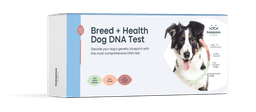Agility training is more than a sport; it's a way to deepen the bond with your pets, challenge their minds, and keep their bodies healthy. As we delve into dog agility training, we'll discuss the essentials of getting started, the benefits for you and your dog, and how you can begin training at home with minimal equipment.
The Basics of Agility Training
What Is Dog Agility?
Dog agility is a competitive sport that tests a dog's speed, agility, and obedience as they navigate through a complex course of obstacles under the guidance of their handler. It's a visually captivating and mentally stimulating activity that showcases the incredible training and teamwork between a dog and their guardian. The agility definition encompasses various obstacles such as jumps, tunnels, weave poles, and see-saws, requiring precision and coordination to complete successfully.
Is the Sport of Agility Suitable for Your Dog?
Before embarking on agility training, assessing whether your dog is a good fit for the sport is crucial. Different dogs respond to agility training in varied ways, influenced by their personality, breed, and health.
Nervous or anxious dogs
Dogs that are naturally nervous or anxious might find the agility course intimidating. However, with patient and positive reinforcement-based training, these dogs can gain confidence and enjoy the sport.
High-energy working dogs
Agility training is ideal for high-energy breeds that thrive on physical and mental stimulation: Border Collie, Australian Shepherd, Belgian Malinois, Siberian Husky, German Shepherd. These dogs often excel in agility courses, finding an outlet for their boundless energy and sharp minds. If you are unsure about your dog’s breed, a DNA test can help determine it more precisely and choose the best training course for your pet afterwards.
Dogs that lack focus
Agility training can also benefit dogs that struggle with focus, as the structured nature of the sport and the need for close communication with their handler can improve their ability to concentrate and follow commands.
Is the Sport of Agility Suitable for You?
Agility training is not just about the dog; it also requires commitment, patience, and physical activity from the handler. Ensure you're ready to invest the time and energy needed to train and bond with your dog through this sport.
The Benefits of Teaching Your Dog Agility
Great exercise
Agility training provides excellent physical exercise for your dog, helping them maintain a healthy weight and improve their overall fitness. It's an engaging way to ensure your dog gets the physical activity they need, regardless of their age or breed.
Reduces boredom
Regular agility training can significantly reduce boredom and destructive behaviors in dogs. By challenging their minds and bodies, agility keeps dogs mentally stimulated and physically tired, making them less likely to engage in unwanted behaviors.
Reinforces good behavior
Agility training reinforces obedience and good behavior. Success on the course requires dogs to listen to and follow their handler's commands closely, which can translate into better behavior in other aspects of their lives.
Strengthens the bond between owner and dog
Working together on an agility course strengthens the bond between you and your dog. The trust and communication developed through agility training can enhance your relationship, making it stronger and more rewarding.
Teaching Your Dog Agility at Home
You don't need access to professional dog agility equipment to start training at home. With some creativity and basic items, you can introduce your dog to the fundamentals of agility.
Introduce contact obstacles
Begin with simple contact obstacles, like a plank on the ground, to teach your dog to walk steadily over different surfaces. Gradually raise the height as they become more confident.
Teach jumps
Set up makeshift jumps using household items. Start low to ensure your dog can clear the obstacle safely, then gradually increase the height as their confidence and ability improve.
Try tunnels
Use children's play tunnels to introduce your dog to tunnel obstacles. Encourage them to follow a treat or toy through the tunnel, praising them enthusiastically when they emerge on the other side.
Move on to weave poles
Weave poles can be simulated with cones or similar items. Guide your dog through the poles with a treat, teaching them to navigate the poles in a slalom-like fashion.
Stay on the pause table
A low table or a sturdy box can act as a pause table. Train your dog to jump onto the table and stay in a sit or down position for a few seconds before moving on.
Complete training with sequencing
Once your dog is comfortable with individual obstacles, begin combining them into sequences. Start with two obstacles, gradually adding more as your dog becomes adept at navigating the courses you create.
Conclusion
Dog agility training for beginners might seem daunting initially, but with patience and perseverance, it can become an enriching activity for you and your dog. It's not just about the physical benefits; agility training can transform the way you communicate and bond with your dog, making your relationship stronger and more dynamic. Whether you aspire to compete or just enjoy a fun, engaging way to exercise with your dog, agility training offers something for everyone.
Frequently Asked Questions
What is a preferred dog in agility?
Border Collies are often considered the preferred breed for agility.
Are cats more agile than dogs?
Cats are generally more agile than dogs in terms of flexibility and balance.
Can any dog do agility?
While any dog can participate in agility training, success varies by individual ability and breed characteristics.


